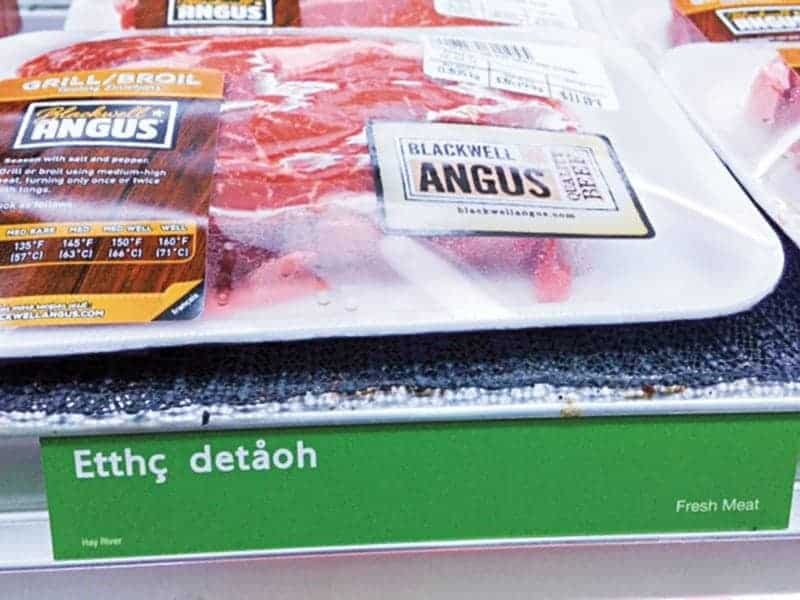The North West Company has translated 80 to 100 items into a local Indigenous language at each of 15 stores across the NWT, as well as in Nunavut and Alaska, as of last month.

“We launched the program at the beginning of October and right now there’s over 120 stores in Northern Canada with 12 different Indigenous languages and over 30 dialects,” said Derek Reimer, director of business development for the company.
The program got its start as an independent, local idea at the company’s Alaska Commercial Company outlet in Barrow. Its stores are operated under the Northern and NorthMart monikers across the NWT and Nunavut.
When president and CEO Edward Kennedy saw the Barrow project, he decided to expand it across the company’s Northern operations.
“Our store being a public setting and in many communities a meeting place,” said Reimer, “We felt it was important to recognize the local language and hopefully encourage people to learn the language who haven’t, or just become more familiar with it.”
Across the country, Indigenous languages are under threat and have been steadily falling for a decade. According to Stats Can the number of people who's mother tongue was an Indigenous language dropped by nearly 50 per cent, from 26 per cent in 1996 to 14.5 per cent in 2011. According to UNESCO, no Indigenous languages in Canada are considered safe-- three out of four Indigenous languages are endangered. However, the same statistics also pointed to an upswing in the number of younger people learning Indigenous languages as a second language.
Barrow said the company teamed up with local schools, community elders and youth, and professional translators to do the translations.
In particular, the company worked with the South Slave Divisional Education Council to adapt some of its own innovations to the whole program.
“They had launched a similar program on a smaller scale where they had done some translation in grocery stores of food shelf labels,” said Reimer, explaining that one of the features of the division’s program was to include QR codes on the label that could be scanned by a smartphone, which would bring up audio translations once scanned.
“We took that feature and we incorporated it in the majority of the communities where we launched this,” said Reimer. “We ended up collaborating with them as well and they were a big support to us.”
Fort Smith has also recently launched projects to put local languages in the spotlight. One, headed by the Northwest Territory Metis Nation, has been to install stop signs bearing their command in Chipewyan, Cree, English and French.
Vance Sanderson, who is coordinating the project with the Metis Nation, and Fort Smith Mayor Lynn Napier-Buckley were both unavailable for comment by press time.
The NWT recognizes English, French, Inuktitut, Gwich'in, North Slavey, South Slavey, Inuinnaqtun, Cree, Chipewyan, Tlicho and Inuvialuktun as official languages. However official census data shows that the most spoken language in the territory is English: according to census data from Statistics Canada in 2011, the last time such data was available, 90.3 per cent of the population of the NWT only spoke English, with only 9.1 per cent speaking both English and French. French only was just 0.1 per cent.
As for Indigenous languages, in 2009, the NWT Bureau of Statistics, Labour Force and Community Surveys found that 3.2 per cent of the population surveyed could converse in Tlicho. Tlicho is the first most spoken non-official language mother tongue in the Northwest Territories, according to Stats Can census data from 2011, followed by Slavey.
